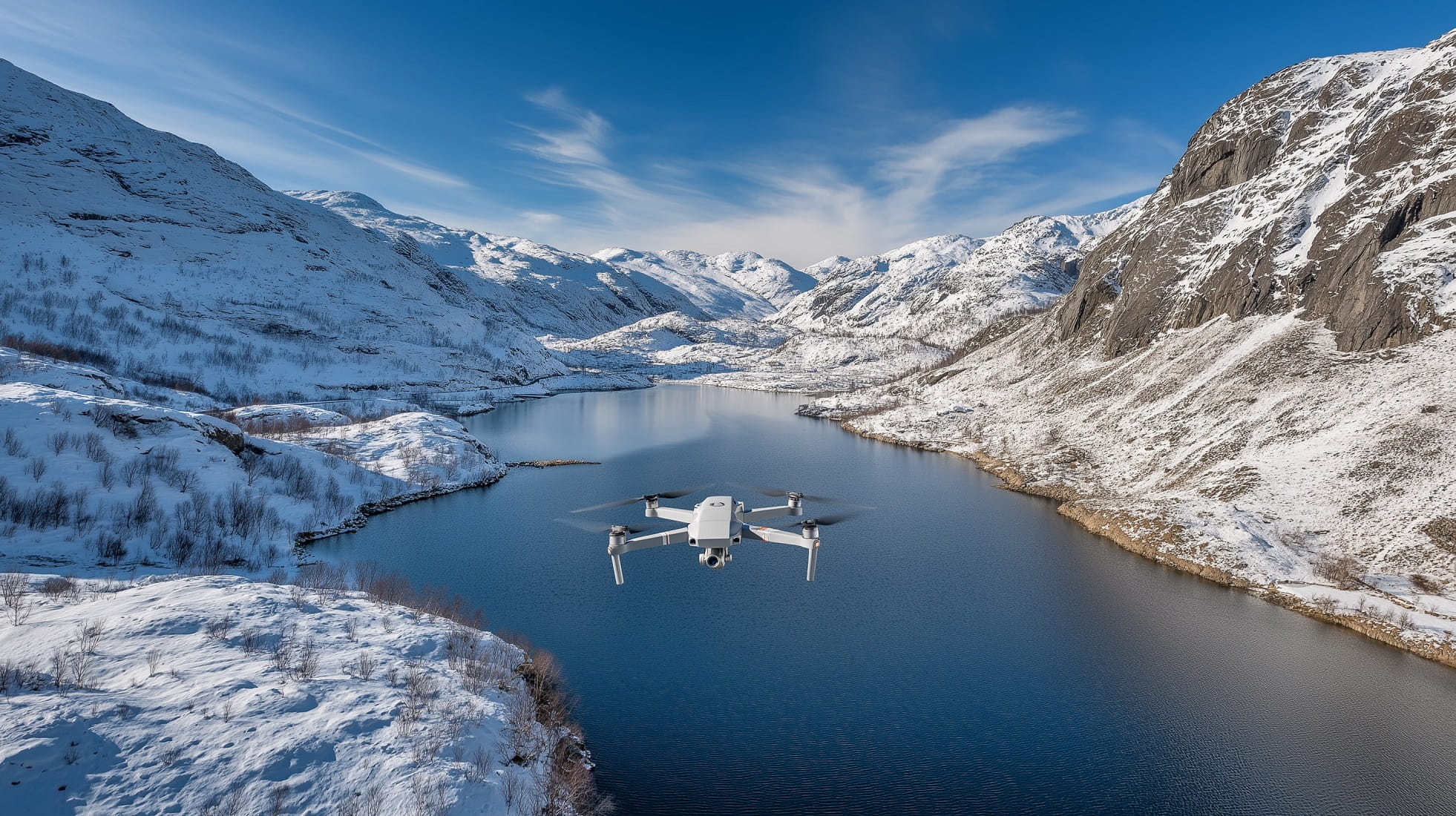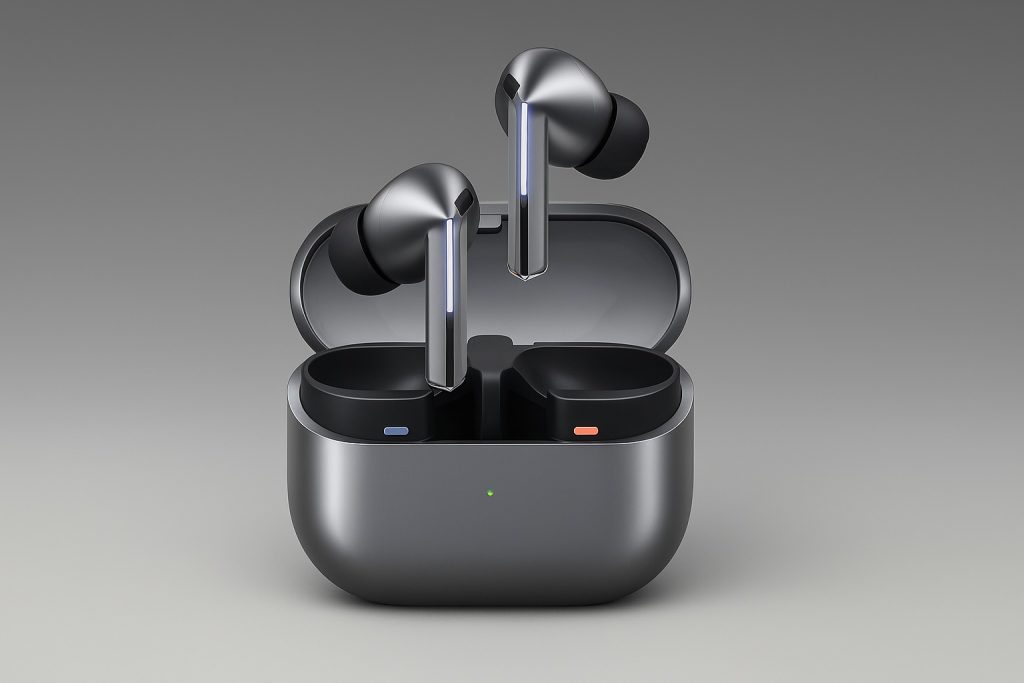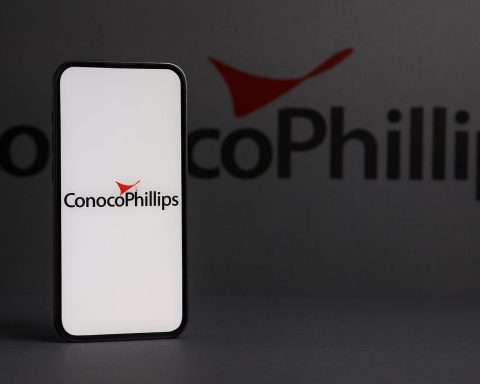- Norway adheres to EU drone rules since 2021, applying the Open, Specific, and Certified categories uniformly to recreational and commercial operations.
- In the Open category, drones must weigh under 25 kg, be kept in visual line of sight, and not exceed 120 meters above ground, with a possible exception to fly up to 15 meters above a structure taller than 120 meters if the owner consents.
- Drones over 250 g must maintain minimum distances from people and property, typically 30 meters from others and 150 meters from residential or commercial areas unless the drone has a class marker.
- Night operations are allowed in the Open category if you maintain VLOS and equip the drone with required lighting, including a flashing green light for night flights.
- Third-party liability insurance of at least 0.75 million SDR is mandatory for all drones that are not CE-marked toys.
- Drone operator registration is compulsory for most drones (over 250 g or with a camera) via Flydrone.no, and each drone must be marked with the operator’s registration ID.
- EU Drone Certificates A1/A3 are required for Open category flying, with an A2 certificate needed for mid-sized drones flying closer to people, minimum age 16, and since 2024 class-labeled drones must have Remote ID; these certificates are mutually recognized across the EU/EEA.
- Specific category operations require a CAA Norway Operational Authorization after a risk assessment (SORA), and since 2024 Standard Scenarios allow some operations to declare compliance rather than full authorization; EU operators can rely on home approvals.
- No-fly zones include airports within 5 km unless ATC permission is granted, Oslo city center R102, and Avinor’s Ninox Drone app is used to manage near-airport permissions as CTR airspace becomes standard.
- Foreign operators must notify NSM before using cameras or sensors; Russian citizens have been banned from drone flights in Norway since February 28, 2022; EU certificates are recognized for foreign users.
General Overview of Drone Laws in Norway
Norway’s drone regulations are largely aligned with the common European Union (EASA) framework, as Norway participates in the EU’s aviation safety system [1]. This means that since 2021, uniform EU drone rules apply in Norway, focusing on a risk-based approach rather than separating users by recreational or commercial intent. The Civil Aviation Authority of Norway (Luftfartstilsynet) is the primary regulator overseeing unmanned aircraft operations [2], with additional input from other authorities (e.g. national security and data protection agencies for camera use and privacy) [3] [4]. All drone operators are required to register their drones (above certain minimal thresholds) and follow the EU-defined operating categories. Notably, under these rules there is no legal distinction between recreational and commercial drone flying in terms of the basic regulations – the same safety rules and categories apply to both [5] [6]. Instead, drone operations are classified by risk into three categories: Open (low-risk flights under set limits), Specific (higher risk operations requiring authorization), and Certified (for the highest-risk operations, akin to traditional aviation, generally not applicable to consumer drones). In practice, most hobbyist and many professional uses fall under the Open category, while more complex commercial operations may require Specific category approval. All drone pilots in Norway must prioritize safety, respecting people’s privacy and avoiding hazardous situations, as violations of these regulations can lead to strict penalties (fines or even imprisonment) under Norwegian law [7].
Regulations for Recreational Drone Use
Recreational drone pilots in Norway are subject to the same core rules as any other drone operators. In general, if you fly for fun or personal use, you will operate in the Open category (which covers drones under 25 kg flying in low-risk conditions). The key rules for Open category flights – and thus for recreational users – include the following [8] [9]:
- Maximum Weight and Visual Line of Sight: Drones must weigh under 25 kg, and you must keep the drone within visual line-of-sight (VLOS) at all times during flight [10]. You cannot use binoculars or FPV alone to extend your view; you or an observer must always be able to see the aircraft with unaided eyes.
- Altitude Limit: You may not fly higher than 120 meters (394 feet) above the nearest point of the ground’s surface [11]. This is a strict ceiling for hobby flights. (Notably, the 120 m height is measured relative to terrain – in hilly areas you must keep within 120 m of the ground beneath, not 120 m from takeoff point [12]. An exception allows going slightly above 120 m only when inspecting a tall structure: you may fly up to 15 m above an object taller than 120 m if you have the structure owner’s permission [13].)
- No Dangerous Goods or Dropping Objects: Attaching any dangerous goods to the drone (e.g. explosives, weapons) is prohibited, as is dropping any items from the drone during flight [14]. Drones cannot be used to carry weapons, fireworks, or any hazardous payload.
- Distance from People (“Uninvolved Persons”): Recreational pilots must fly safely away from people and property not involved in the operation. It is forbidden to fly directly over uninvolved persons and absolutely banned to fly over assemblies of people (crowds, festivals, concerts, etc.) in the Open category [15]. Even with a small drone, pilots should avoid causing nuisance or endangerment – use common sense and keep a respectful distance. For heavier drones (over 250 g), specific minimum distances apply: for example, without a special class marking, you should keep at least 30 meters from other people and 150 meters from residential, commercial, or recreational areas [16]. These distance rules effectively mean that most recreational flights with larger drones should be in sparsely populated areas unless you have a very light drone or additional permissions.
- Daytime and Night Operations: You may fly at night as a recreational pilot provided you maintain VLOS (visibility of the drone) and equip the drone with the required lighting. Norway’s rules mandate a flashing green light mounted on the drone for night flights [17]. Always ensure you can orient and control the drone in darkness – otherwise, restrict your flying to daylight hours.
- Respect for Privacy: Recreational drone users must respect others’ privacy rights. Do not film or photograph people on private property without consent [18]. Norway has strict privacy laws; harassing someone with a drone camera or publishing footage of individuals without permission can lead to legal consequences under the Penal Code [19] [20]. In short, avoid intruding on people’s privacy and follow GDPR/data protection rules when capturing images [21].
Before flying for fun, you should also conduct some basic pre-flight checks. Always verify if the area is open for drone flights – Norway provides maps and apps to identify No-Drone Zones (more on those below) [22]. Additionally, if you plan to use cameras or other sensors on your drone as a recreational user, be aware of restrictions: certain areas (e.g. around military bases or sensitive infrastructure) have sensor restrictions, and foreign nationals in particular must register any aerial photography plans with authorities (explained under “Foreign Operators” below) [23] [24]. Lastly, even for recreational flying, liability insurance is highly recommended (and often required – see “Insurance and Liability” section) to cover any damage your hobby might inadvertently cause [25]. By adhering to these rules, recreational pilots can enjoy Norway’s beautiful landscapes responsibly, without endangering others or running afoul of the law.
Regulations for Commercial Drone Use
Commercial drone operations in Norway are governed by the same fundamental framework as recreational use, with no separate “commercial drone license” for basic operations [26]. If you are flying a drone for commercial purposes (such as aerial photography services, inspections, or deliveries), you must still comply with the Open category rules above when operating under those conditions. Norwegian law does not distinguish between recreational and commercial flights in the Open category – both are subject to identical limitations on weight, altitude, visual line of sight, etc. [27]. For example, a real estate photographer using a drone must follow the 120 m altitude limit, maintain distances from people, and register/certify just as a hobbyist would. All operators, regardless of purpose, need to be registered and properly certified for the category of operation [28]. Insurance requirements likewise apply equally (there is no separate insurance law for “commercial” drones – liability coverage is mandatory across the board) [29] [30].
However, many commercial missions tend to push beyond the boundaries of the basic Open category. If a business use-case cannot be accommodated within the Open category’s strict limits, it will fall into the Specific category which entails additional requirements. Commercial examples that require Specific category authorization include: flying a heavier drone (over 25 kg), flying Beyond Visual Line of Sight (BVLOS), flying at night without VLOS, operating at altitudes above 120 m, flying closer to people or over populated areas than Open category allows, etc. In Norway (as in the EU), to conduct such operations you must obtain an Operational Authorization from the CAA Norway before the flight [31] [32]. This involves performing a risk assessment (often using the SORA – Specific Operations Risk Assessment – methodology) and submitting an application detailing your operation, safety measures, and pilot qualifications. CAA Norway will evaluate and, if satisfied, grant an authorization with specific conditions for that operation or type of operation.
For commercial operators based in another EASA member state who already have an authorization at home, Norway has a cross-border process: you can submit your home country’s operational authorization, proof of insurance, and relevant documentation to CAA Norway to get approval to operate in Norway [33] [34]. Similarly, starting in 2024, the EU has introduced Standard Scenarios (STS) – predefined operation templates (with class C5 or C6 drones) that allow commercial operators to simply declare compliance to a scenario rather than go through a full authorization each time. Norway, in line with EASA, is implementing these to streamline certain routine professional operations. If you plan to use a drone for advanced commercial activities, be prepared to invest time in proper training and administrative procedures with the CAA.
To summarize, commercial drone pilots must meet all the same baseline rules as recreational pilots, but they often have additional obligations if the nature of their work is more complex. Ensure you have the required pilot competency certificates (proof of training for Open category, and potentially a license or authorization for higher-risk flights), register your operator and mark your drones, and secure approvals for any operation that goes beyond standard Open category limits. Norway’s regulations aim to facilitate business use of drones while maintaining safety – there is ample opportunity for commercial drone services as long as you comply with the framework.
(See the table below for a side-by-side comparison of key rules for recreational vs. commercial use.)
Summary Table: Recreational vs. Commercial Drone Rules
| Aspect | Recreational Use | Commercial Use |
|---|---|---|
| Registration | Operator registration required if drone >250 g or has a camera [35] (virtually all but toy drones). Register via Norway’s online system (flydrone.no) or in your home EASA country. No difference – hobbyists must register just like pros. | Operator registration required (same criteria) – no separate commercial registry [36]. Foreign commercial operators can use their home registration or register in Norway. Each drone must be marked with the operator’s ID number [37] [38]. |
| Pilot Licensing | EU Drone Certificate needed for most. Hobbyists must pass the online A1/A3 exam (for drones >250 g) [39]; additional A2 exam if flying a mid-size drone closer to people. Minimum age 16 (or supervise younger pilots) [40]. | EU Drone Certificate likewise required – there is no separate “commercial license” for basic operations [41]. The same A1/A3 and A2 certificates apply based on the drone and operation. For higher-risk commercial ops, remote pilots may need advanced training or certifications as part of Specific category authorizations. |
| Insurance | Liability insurance is mandatory for any non-toy drone (nearly all recreational drones) [42]. Minimum coverage ~0.75 million SDR (Special Drawing Rights) for third-party liability. Recreational fliers must carry insurance in case of accidents. | Liability insurance mandatory (same requirement) [43]. Commercial operators typically carry robust insurance; at minimum 0.75M SDR coverage is legally required. No separate commercial insurance threshold – the law treats all UAS the same, but higher coverage is recommended for business risk. |
| Operational Limits | Must follow Open category limits: <25 kg, VLOS only, max 120 m altitude [44]. No flights over uninvolved people or large gatherings [45]. Stay 5 km away from airports (unless ATC permission) [46]. Avoid no-fly zones (e.g. military areas, protected sites) without permission [47]. | Same baseline Open category limits apply for standard commercial flights [48]. Commercial flights must also respect no-fly zones and safety distances equally. However, for operations exceeding these (e.g. beyond 120 m or BVLOS for mapping, heavy-lift drones, etc.), a Specific category authorization is required [49]. With authorization, some limits can be extended under controlled conditions (e.g. higher altitude or BVLOS with proper mitigations). |
| No-Fly Zones & Airspace | Must check and avoid geographical zones where drones are prohibited or restricted: e.g. within 5 km of airports without clearance [50], over Oslo city center (restricted area R102) without CAA permission [51], near ongoing emergency response scenes, certain nature reserves, and sensitive infrastructures (prisons, embassies, military sites) [52] [53]. Hobbyists need landowner permission to take off/land on private property [54]. | Same airspace restrictions – commercial operators must abide by all no-drone zones and coordinate with authorities. In practice, businesses often use tools like Avinor’s “Ninox Drone” app to get ATC permissions for flights near airports [55]. Companies may apply for waivers or permits to operate in restricted areas for specific projects (e.g. film crews obtaining permission to fly in a city center or inside a national park), but these require CAA or relevant authority approval case-by-case. |
| Foreign Operators | N/A (by definition recreational users are individual hobbyists, including foreign tourists). Foreign hobbyists: allowed to fly under the same rules. EU/EEA residents use their home registration and certificate in Norway [56]. Non-EU residents should register in Norway (or first EU country of entry) and obtain an EASA certificate [57]. Russian citizens are banned from any drone flying in Norway per government sanctions [58]. | Foreign companies or professionals must also comply. EU-based operators can operate in Norway on a cross-border basis (notify CAA Norway with home country authorization and insurance) for Specific category ops [59]. Non-EU companies currently must follow Norway’s national rules to obtain a permit (until Norway implements the EU-third country provisions) [60]. All foreign operators need to have an EASA registration and certificate, mark their drones, carry insurance, and (if using cameras) register sensor use with NSM [61] [62]. |
| Enforcement & Penalties | Regulated by CAA Norway and enforced by police. Violations (even by hobbyists) can incur fines or up to 3 months imprisonment under the Aviation Act [63]. Serious breaches (flying dangerously, endangering aircraft or privacy violations) fall under the Penal Code with harsher penalties – e.g. up to 2 years for severe invasion of privacy [64] or up to 6 years if endangering manned aircraft [65]. Authorities may also confiscate your drone for illegal flying [66]. | Same legal consequences. Commercial status doesn’t exempt one from penalties; in fact, authorities may expect a higher standard of care from professional operators. Companies can face fines and individuals (remote pilots) can face fines or jail for non-compliance. CAA Norway can also suspend or revoke authorizations/certificates for rule violations. In addition, foreign violators might be deported or banned from Norway in egregious cases. |
Key takeaway: Norwegian law applies uniformly to all drone pilots – whether flying for fun or profit – particularly under the Open category. The major differences arise only when commercial operations venture into higher risk activities, triggering additional requirements (Specific category permissions). Recreational users generally stay within basic limits, whereas commercial operators might pursue those extended operations with proper clearance. In either case, safety, respect for privacy, and compliance with airspace restrictions are mandatory.
Licensing and Registration Requirements
Drone operator registration is a cornerstone of Norway’s UAV regulations. Any person or entity flying drones in Norway must be registered as a drone operator if their drone weighs more than 250 grams or is equipped with a camera/sensor capable of capturing personal data [67]. In practice, this means virtually all drones except the lightest “toy” models require registration, since even sub-250g camera drones (like DJI Mini series) fall under the camera criterion. The registration process in Norway is done through the online portal Flydrone.no, which issues you an operator ID number. EU/EEA residents visiting Norway do not need to register again locally if they have already registered in their home country – Norway recognizes the EU-wide drone operator registry system [68]. Conversely, if you are a non-EU (third country) operator with no EU registration, you should register in the first EASA-member country you plan to fly in (so if Norway is your first stop, register via Norway’s system) [69]. Registration is a one-time process (with periodic renewal) and there is no distinction between recreational or commercial operators – the same registration covers both uses [70].
Along with operator registration, Norway requires proof of pilot competency through licensing (certification). Under the EASA framework, remote pilots must pass online training and exams to obtain an EU Drone Certificate corresponding to the subcategory of operations. The most common certification for hobbyists and basic users is the A1/A3 certificate, which involves an e-learning course and an online exam covering fundamental rules and safety (available in English via flydrone.no) [71]. This certificate is mandatory for anyone flying drones heavier than 250 g in the Open category [72]. For those intending to fly in more built-up areas with certain drones (subcategory A2, typically mid-sized drones up to 2 kg flying closer than 150 m to people), an additional A2 Certificate is required – in Norway, the A2 theory course can be taken online, but the exam must be taken in-person at a Driver and Vehicle Licensing Office (and is offered in English) [73] [74]. All these certifications issued by any EASA country are mutually recognized; e.g., a German or French “EU Drone License” is valid in Norway and vice versa [75].
Age requirements: The minimum age to operate a drone independently in Norway (and EASA states) is 16 years for Open category operations [76] [77]. Pilots younger than 16 may fly only under direct supervision of a qualified adult, or within the framework of an approved model aircraft club or organization. There is no upper age limit, but all pilots must be physically and mentally fit to safely operate (not under influence of drugs/alcohol, etc. – flying under influence is illegal by the Aviation Act) [78].
Once registered and certified, the operator needs to label each drone with their registration number. In Norway, you must attach your operator ID on the drone (a sticker or engraving) or use a QR code containing the ID [79] [80]. This marking is important so that authorities can identify the owner of a drone if it’s found or involved in an incident. Note that the pilot’s certificate number is not a valid marking – it must be the operator’s registration ID.
Finally, for commercial operators in the Specific category, licensing/authorization goes a step further: you might need an Operational Authorization from CAA Norway as discussed, or if operating under a Standard Scenario, a declaration. These are essentially special permissions rather than a different license class, but they do come with documentation. Norway used to categorize professional UAS operations by weight (RO1, RO2, RO3 under older national rules), but since the EU regulations took effect those have been superseded by the EASA categories and certification system. Today, focus on obtaining the EASA remote pilot certificates and the necessary authorizations for your operation type, rather than any outdated “UAS license.” In summary, every drone operator must be registered and every pilot must be appropriately certified, which ensures accountability and competency in the Norwegian airspace.
No-Fly Zones, Altitude Limits, and Proximity Rules
Norway imposes strict rules about where you can fly drones, at what heights, and how close to people or sensitive areas you can get. Many of these are common-sense safety restrictions, and some are specific geographical zones defined by authorities to protect security or privacy. Before each flight, it’s the pilot’s responsibility to ensure the airspace is clear and legal for drone use [81] [82].
Altitude Limit: As noted, the default maximum altitude for drones is 120 meters above ground level [83] [84]. This applies everywhere in Norway under Open category rules. It keeps drones well below manned aircraft in most cases. Only under specific authorization (Specific category or special zone) could you fly higher. For instance, with special permission or in designated areas, authorities might allow higher altitude or BVLOS flights, but these are exceptions. Do not exceed 120 m during normal flights – it’s both illegal and dangerous, as low-flying helicopters or aircraft could be in that airspace. Also remember the nuance that it’s 120 m from the nearest terrain point – in uneven terrain, you must monitor the drone’s height relative to ground immediately below, not just your takeoff point [85].
No-Fly Zones & Restricted Areas: Norway has a number of “no-drone zones” where flying is either outright prohibited or requires special permission. The major restrictions include:
- Airports and Aerodromes: It is illegal to fly a drone within 5 kilometers of an airport or airfield without prior permission from air traffic control (the control tower) [86]. This 5 km rule is strictly enforced to prevent interference with manned aircraft during takeoff and landing. Many Norwegian airports use an app-based system (Avinor’s Ninox Drone system) for drone permission requests inside the 5 km radius [87]. If you must fly near an airport for any reason, always contact the airport/ATC well in advance to seek authorization – flying without it can lead to serious penalties. (Note: the regulation is evolving to use official Control Zones (CTR) rather than a fixed 5 km circle [88]. In the near future, the rule will likely be “no flying inside the airport’s controlled airspace without clearance,” which at some airports may extend beyond 5 km or have specific boundaries. Always check the current maps for the airport’s no-drone zone.)
- Urban Areas (Cities/Towns): Norway has designated certain urban and sensitive areas as restricted airspace for drones. For example, Oslo city center is a permanent restricted area (R102) where drone flights are banned unless you obtain explicit permission from CAA Norway [89]. This is to protect people, property, and critical government functions in the capital. Other cities may have temporary restrictions during events or visits by dignitaries – these will be announced via NOTAMs. As a rule of thumb, avoid flying over densely populated city centers or over gatherings of people. Even outside officially restricted zones, operating over a town center full of uninvolved people would violate the Open category rules.
- Emergency Sites: You must not fly near ongoing emergency operations – such as traffic accidents, fire scenes, search-and-rescue operations, or police incidents [90]. Drones can hinder helicopters or first responders. Give a wide berth to any area where emergency crews are at work; violating this can not only result in legal punishment but also endanger lives.
- Military Areas and Security-Sensitive Zones: It is forbidden to fly over or near military bases, installations, or vessels, as well as prisons and royal residences or embassies [91], without permission. These sites are often guarded and may be marked as no-drone zones (some may use electronic drone countermeasures as well). Flying a drone in these areas could lead to it being intercepted and to prosecution. Always assume such locations are off-limits unless you have explicit clearance from the appropriate authority.
- Nature Reserves and National Parks: Protected natural areas in Norway may have their own rules restricting drone use [92]. The Norwegian Environment Agency provides maps of protected nature areas and many national parks post signage indicating if drones are not allowed [93] [94]. The concern is to avoid disturbing wildlife (e.g., nesting birds, reindeer) and other visitors. For example, several national parks ban drones during breeding seasons. Check the specific regulations of any park or reserve you plan to visit – permits might be obtainable for certain uses like filmmaking, but casual recreational flying in these areas is often frowned upon or banned.
- Areas with Sensor Restrictions: Uniquely, Norway has certain zones where aerial photography and sensing are restricted by the Norwegian National Security Authority (NSM) [95]. These might include areas near sensitive infrastructure (like government buildings, power plants) or border regions. NSM maintains a map of zones where you cannot take aerial photos or where you must notify authorities before doing so [96]. Even if flying is allowed, using a camera or other sensors in these areas without prior registration could violate security laws. Notably, foreign citizens flying in Norway must register any use of cameras or sensors on their drone with NSM beforehand [97] [98]. This can be done online (via NSM’s geodata portal) and is required even for regular photography if you’re not a Norwegian national.
- Temporary Restrictions (NOTAMs): Always check for NOTAMs (Notices to Airmen) before flying, especially for commercial operations. Temporary no-fly zones can be established—for example, around VIP visits, military exercises, or accident sites. The site IPPC.no (Avinor/CAA) publishes relevant NOTAMs for Norway [99] [100]. Violating a temporary restriction is as serious as violating a permanent one.
In addition to these, remember the general proximity rules: even where drone flying is allowed, you should keep a safe distance from people, property, and wildlife. Norway’s rules require at least 150 m distance from residential or populated areas for larger drones without special class identification [101]. You also need permission from the landowner for takeoff/landing on private land [102] – flying over someone’s house or land at low altitude could infringe on their privacy and property rights. Use common sense: avoid hovering over homes, gardens, or crowds of tourists. Always yield right-of-way to manned aircraft – if you see a helicopter or low airplane, immediately get out of its way (land your drone or move well below and aside).
Overall, Norway provides tools like the Avinor Drone Map/Ninox and other online maps to help operators visualize these no-fly and restricted zones [103]. It’s wise to consult these before every flight. By respecting altitude limits and no-fly zones, you not only comply with the law but also help maintain safety and public trust in drone use.
Insurance and Liability Requirements
Insurance is compulsory for drone operations in Norway in almost all cases. Norway has implemented a rule (aligned with EU requirements) that all drones other than lightweight toys must carry third-party liability insurance [104]. This means whether you fly recreationally or commercially, you need an insurance policy that will cover damage or injury your drone might cause to other people or property. The minimum liability coverage required is 0.75 million Special Drawing Rights (SDRs) [105], which is a value set by international aviation conventions – 0.75M SDR is roughly equivalent to €0.9 million (or around USD 1 million) in coverage. This minimum applies per incident for third-party bodily injury or property damage. In practice, many hobby flyers get liability coverage through their home insurance or a membership in a drone association, while commercial operators often purchase dedicated drone insurance policies.
It’s important to note that insurance is required regardless of drone weight if the drone is not a CE-marked toy. Even a sub-250g drone with a camera, for example, should be insured (since it’s not a toy) to comply with Norwegian regulations [106]. The only exception might be truly toy drones (little indoor quadcopters for children) which are treated differently, but those are generally not flown outdoors or in regulated airspace. Essentially, if you need to register the drone, you should insure it.
Liability and responsibility: The registered operator of the drone is generally the liable party for any damage caused. Norwegian law (and EU law) places responsibility on the drone operator to ensure safe operations at all times. If your drone crashes into someone’s car or injures a person, you are on the hook for the damages. That is why carrying adequate insurance is not only a legal obligation but also financially prudent. In case of an incident, failing to have the mandated insurance could result in significant out-of-pocket costs and legal penalties.
Some additional points on liability: If you are flying on behalf of a company (i.e., the company is the operator), the company needs to have insurance coverage for drone operations. Also, ensure your insurance is valid in whatever country you operate in – many European policies cover EEA countries, but it’s worth double-checking that Norway is included if you purchased the policy elsewhere. Lastly, insurance does not negate the need to follow the rules; if you grossly violate regulations, an insurer might refuse the claim. Always operate responsibly, as insurance is the safety net, not a license to take risks.
In summary, before flying, make sure you have a valid third-party liability insurance policy for your drone [107]. It’s a requirement on par with registration and certification in Norway’s drone laws. Besides being legally required, it offers peace of mind that if something goes wrong, victims can be compensated and you are protected from ruinous liability.
Regulations for Foreign Drone Operators (Tourists and International Companies)
Norway welcomes foreign drone operators, but they must adhere to the same EU-based rules and a few additional national requirements. The regulations differ slightly depending on whether you are coming from another EASA member country or a non-EASA country:
- EU/EEA Citizens (and Switzerland): If you are an EU citizen or resident (this includes EEA countries like Iceland and Liechtenstein, and Switzerland by special agreement), you can fly your drone in Norway under the same conditions as Norwegian operators [108]. Crucially, there is no need to re-register your drone in Norway – you should be registered as a drone operator in your home country, and Norway will honor that registration [109]. Likewise, any EASA drone pilot certificates you hold (A1/A3, A2, etc.) are valid in Norway. When traveling, bring proof of your operator registration (usually a registration number and possibly a printed certificate) and your pilot competency certificate. You must also mark your drone with your operator number (your home-country registration ID) before flying in Norway [110]. Essentially, Norway treats EU-registered operators as equals to domestic ones, given the common regulatory framework.
- Non-EU (Third Country) Visitors: If you are coming from a country outside the EU/EASA system (for example, the USA, Canada, Australia, etc.), you must register as a drone operator in an EASA country before flying in Norway [111]. The rule is you should register in the first EASA country you intend to fly in. So if you plan a drone flight in Norway but you haven’t registered anywhere in Europe yet, you can register directly in Norway via the flydrone.no portal. This will give you a Norwegian operator ID. Once you have that, you need to obtain the required EASA drone pilot competency certificate for your type of flying [112]. Norway offers the basic A1/A3 online course/exam in English through Flydrone.no, and you can even do the A2 course online (though the A2 exam for foreigners has to be taken in Norway at a test center) [113] [114]. In practice, many serious hobbyists from abroad complete an EU drone certificate before traveling (one convenient way is to do the exam online via another country’s CAAs if available). But if not, Norway provides means to get certified after you arrive – just be sure to do this before operating your drone. The same “no distinction between recreational and commercial” rule applies, so even as a tourist flying just for fun, you must go through registration and certification if your drone isn’t a toy [115] [116].
- Liability Insurance for Foreigners: Norway requires all operators (including visitors) to have valid insurance. If your drone liability insurance from home covers worldwide or Europe, bring proof of it. If not, you may need to purchase insurance that is valid in Norway. Do not skip insurance because you’re a foreigner – the law applies equally [117] [118].
- Camera/Sensor Use – NSM Notification: One unique requirement in Norway affects many foreign drone pilots: before flying with a camera or any sensor (like a high-resolution camera, lidar, etc.), you must register the planned use with the Norwegian National Security Authority (NSM) if you are not a Norwegian citizen [119] [120]. This is due to security considerations (Norway is cautious about aerial photography that might include critical infrastructure or sensitive areas). The process involves filling out a short online form (available via NSM’s website or the geodataonline.no link) to notify what and where you will be filming/photographing. This applies to any drone with a camera, even for recreational holiday shots. Norwegian citizens are generally exempt from this step when flying in Norway, but foreigners must do it each time they visit new areas to film. Ensure you comply, as flying with an unregistered camera as a foreign national could cause trouble if authorities question you.
- Restricted Nationalities – Russia Ban: Due to sanctions and security measures, Russian citizens and entities are currently banned from operating drones in Norway [121]. Since 28 February 2022, all flights by Russian-operated drones are prohibited in Norwegian airspace. Even Russian tourists cannot fly drones while in Norway. (Russian citizens may only participate as crew under a non-Russian operator that isn’t subject to sanctions, in very limited cases [122].) This ban came as part of Norway’s response to the Ukraine conflict and concerns over spying; it has led to some high-profile incidents of Russian nationals being arrested for illegal drone flying in 2022–2023. Other foreign nationals generally do not face such blanket bans, but it’s a reminder to always abide by Norwegian security rules.
- Foreign Commercial Operations: If an international company or professional crew wants to operate in Norway, the procedure depends on whether they are based in an EASA member state. EU-based companies can leverage the cross-border operations provision: obtain any necessary Specific category authorization from your home CAA, then apply to CAA Norway with that authorization and insurance proof for permission to operate in Norway [123] [124]. CAA Norway will review and usually grant the approval to operate under the terms of your home authorization (possibly with some local adaptations for Norwegian conditions). If the company is from outside the EASA area, Norway currently requires following the Norwegian national rules for authorization [125] – essentially you’d need to apply directly to CAA Norway for an operational permit as if you were a Norwegian operator. This can be a complex process, so engaging a local Norwegian UAS consultancy or partner might help. Additionally, foreign operators must ensure their pilots have EU certificates or equivalent and adhere to all Norwegian rules (e.g., sensor registration with NSM, no-fly zones, etc.). International film crews often coordinate with local authorities to get filming permits for drones, which cover some of these requirements.
In summary, tourists and foreign businesses can fly drones in Norway but must “do their homework”. Get registered, get certified, have insurance, and learn Norway’s specific rules (like the airport 5 km rule and NSM notification). Language is usually not a barrier – CAA Norway provides information in English, and exams are available in English. By following the procedures, foreign operators can enjoy Norway’s stunning scenery or carry out commercial projects without legal issues. Just as importantly, failing to follow them can lead to your drone being confiscated and hefty penalties, so compliance is key even on holiday.
Penalties for Violations of Drone Regulations
Norway takes the enforcement of drone laws seriously. If you violate drone regulations, you can face significant penalties ranging from fines to imprisonment, depending on the severity of the offense. Below are the key points regarding penalties:
- Fines: Most common breaches (flying without registration, going into a no-fly zone, flying too high or too close to people, etc.) can result in financial penalties. The Norwegian authorities can issue heavy fines for these infractions. For example, failing to register a drone over 250g or flying in a prohibited area can lead to fines in the order of thousands of Norwegian Kroner [126]. The exact fine will depend on circumstances; it might be relatively modest for a minor first-time offense, but it can be much larger if the violation is egregious or causes damage. Companies can be fined higher amounts than individuals in some cases.
- Imprisonment: Under the Aviation Act and Norway’s Penal Code, certain drone law violations can incur criminal charges. According to the Aviation Act §14-29, breaking drone regulations or operating limitations is punishable by fines or up to 3 months in prison for a general violation [127]. This covers, for instance, recklessly flying in restricted airspace or endangering others. However, if a drone operation causes a serious safety risk or harm, other laws kick in with tougher sentences. Norway’s Penal Code can punish severe cases (such as negligently endangering an aircraft) with up to 2 years imprisonment or more [128]. In fact, if someone deliberately interferes with the safe operation of an aircraft or airport using a drone (for example, causing a near-collision with an airliner), they could face up to 6 years in prison under general air safety endangerment provisions [129]. Likewise, using a drone to stalk or harass someone (privacy violations) can lead to up to 2 years in prison under stalking/harassment laws [130]. These are maximum penalties and would likely apply only in extreme cases, but they underscore that Norway treats drone misuse that endangers lives or security as a serious crime.
- Drone Confiscation and Forfeiture: If you violate the rules, authorities may seize your drone equipment. CAA Norway explicitly notes that illegal drone operations may lead to confiscation of the drone [131]. This has happened in practice, especially with foreign operators who flew in banned areas – their drones were confiscated and not returned. So beyond fines or jail, expect to lose your drone if you break major rules.
- Other Consequences: Foreign nationals who violate drone laws have, in some cases, been deported or banned from re-entry into Norway. For example, in 2022 several tourists (from countries under sanctions) flying drones illegally were not only prosecuted but also had their residence permits revoked or were expelled from Norway after serving any sentence [132]. Commercial operators may face license or authorization revocations. If a certified drone pilot or authorized company flagrantly breaks the rules, CAA Norway can suspend or cancel their operating permissions, effectively grounding their operations. Insurance might also refuse coverage if the flight was illegal, leaving the operator fully liable for any damages.
- Enforcement Approach: The Norwegian Police typically handle on-the-spot enforcement and investigation of drone incidents, working in conjunction with CAA Norway. For instance, if someone reports a drone near an airport or a protected area, police units (sometimes with the help of drone detection systems like those installed by Avinor at airports) can track down the pilot. Norway has been actively improving drone detection around sensitive sites. The Civil Aviation Authority (CAA Norway) handles administrative sanctions and coordination – they might issue warnings or administrative fines for lesser infractions, and they assist police with expertise on the rules. In any serious incident (e.g., a near-miss with an aircraft), expect a full investigation, and if you are found at fault, charges will be filed.
In conclusion, Norwegian authorities have a range of tools to penalize drone law violations. Even as a hobbyist, you can face a fine or a court case if you fly irresponsibly [133]. The presence of potential jail time indicates how seriously Norway views drone safety and privacy. To avoid these penalties, it is imperative to follow the regulations we’ve outlined – register, get certified, respect no-fly zones, maintain safe distances and altitudes, and use common sense. If unsure about a rule, err on the side of caution or consult CAA Norway’s resources. Flying a drone in Norway can be very rewarding, but the consequences of non-compliance are severe to ensure public safety and security.
Authorities Responsible for Enforcing Drone Laws
Multiple authorities in Norway share responsibility for drone regulation and enforcement, ensuring that rules are followed and updated as needed:
- Civil Aviation Authority Norway (Luftfartstilsynet): This is the primary regulatory body overseeing civil aviation, including drones. CAA Norway is responsible for implementing EASA’s drone regulations nationally, issuing guidance and authorizations, and maintaining the operator registration system [134]. They create and update rules (sometimes in coordination with EASA and the Ministry of Transport) and are tasked with oversight of operators – their inspectors can conduct audits or inspections on drone operators if needed [135]. CAA Norway’s website (luftfartstilsynet.no) provides extensive information, FAQs, and even interactive training tools for drone pilots. If you apply for a Specific category operation or have questions, CAA Norway handles those inquiries. While CAA Norway doesn’t patrol the streets, it works closely with other agencies to enforce compliance and can issue administrative penalties or pursue legal action through the justice system when regulations are breached.
- Norwegian Police: The police are the front-line enforcement agency for drone laws. They handle incidents of illegal drone flying reported by the public or detected by security systems. For example, if someone flies too close to an airport or over a sensitive site, the local police can respond, identify the pilot, and take action (from ordering an immediate landing to arresting the individual in severe cases). Police have the authority to issue fines on the spot for minor infractions or refer cases for prosecution. They also coordinate with military or airport authorities if a drone incursion poses a security threat. Notably, Norway has had police investigations leading to prosecution for drone violations – including cases under the new Russian sanctions where police arrested individuals for unauthorized drone flights. Always comply with police instructions regarding your drone.
- Avinor (Air Traffic Control/Airports): Avinor is the state-owned company that operates most of Norway’s civil airports and air navigation services. Through air traffic control units, Avinor plays a key role in drone enforcement around airports. ATC is the authority that must grant permission for any drone flights within 5 km of airports [136], so they effectively enforce that restriction – unauthorized drones near airports will be reported, and Avinor’s staff might initiate emergency measures (including halting air traffic if a drone is a hazard). Avinor has deployed the Ninox Drone system, a UTM (Unmanned Traffic Management) solution, at several airports to manage drone activity requests and detect unapproved flights [137]. If you request clearance via the Ninox app, Avinor’s controllers decide to approve or deny it. If you fly without permission, Avinor’s detection might alert ATC and police. Thus, Avinor is an important enforcement stakeholder for airspace security.
- Norwegian National Security Authority (NSM): NSM is responsible for areas related to national security, which includes enforcing the rules on aerial photography and sensor use. They maintain the registry for foreign operators to notify camera usage [138]. If someone violates sensor restrictions (e.g., takes photos over sensitive areas without clearance), NSM can be involved in investigating and can impose sanctions under security laws. NSM’s focus is on protecting sensitive sites from espionage or mapping, so they cooperate with defense and police if a drone breach is suspected to have security implications. In practical terms, a tourist might never interact with NSM beyond filling out the online form, but behind the scenes NSM ensures those rules are upheld.
- Norwegian Data Protection Authority (Datatilsynet): While not specific to drones, Datatilsynet oversees privacy laws (GDPR) in Norway. If a drone is used to capture personal data (photos of people, etc.) in a way that breaches privacy, this authority can get involved. They might handle complaints from individuals who feel a drone operator violated their privacy rights. Serious invasions of privacy by drone can also be handled by the police under criminal law (as noted, Penal Code provisions apply), but civil or administrative actions can come via Datatilsynet. For example, if a company used a drone to film a private home without consent and published the video, Datatilsynet could sanction the company for breaching privacy regulations [139]. Drone pilots should be mindful of Norway’s robust privacy protections.
- Military Authorities: The Norwegian Armed Forces have authority over military zones and during certain operations. If a drone flies in a restricted military area or during a defense exercise, military authorities can intervene (including jamming or downing the drone if necessary). They coordinate with CAA Norway in establishing restricted airspace when needed and have rights to enforce those restrictions swiftly for security. While this mostly concerns state-level threats, a clueless hobby pilot wandering into a military no-fly zone might quickly encounter military police or electronic countermeasures. The Armed Forces also handle any drones encountered that might pose espionage threats.
All these bodies together ensure Norway’s drone ecosystem is safe and secure. For drone operators, the best approach is to be proactive: use CAA Norway’s resources to stay informed, use Avinor’s tools to stay clear of airports, respect NSM’s rules on sensors, and always be ready to show police your registration and certificates if asked. Enforcement is not intended to discourage drone use – it’s there to prevent irresponsible actors from causing incidents. As long as you fly by the rules, these authorities are allies in helping you operate safely (for example, ATC giving you permission in a controlled manner, or CAA Norway answering your regulatory questions). But if you break the rules, expect these authorities to coordinate and respond decisively.
Recent Updates and Changes in Drone Law (2024–2025)
Drone regulations are continually evolving, and 2024 brought some notable changes both at the European level and in Norway’s local implementation. Here are the key recent updates up to 2025 that drone operators should be aware of:
- End of Transitional Rules & Drone Classification (2024): When the EU drone regulations first came into effect, there was a transitional period allowing older drones (without class markings) to be used under certain lenient conditions. This transitional regime ended on 1 January 2024 [140] [141]. As of 2024, new drones sold in Europe are required to have a class identification label (C0, C1, C2, etc.), and the rules for “legacy” drones (those without a class mark) have tightened. Notably, starting 2024, if you have a drone without a class mark:
- You can no longer fly certain heavier legacy drones in the same subcategories as before. For example, previously a 500g drone could be flown in subcategory A2 with some conditions, but from 2024 onward, any drone 250g–25kg without a class label essentially falls under A3 (far from people) restrictions [142]. A summary: legacy drones 250–500g moved from A1 to A3; 500g–2kg moved from A2 to A3; >2kg remain A3. This means many older drones are now restricted to more remote operations unless retrofitted or exempt.
- New drones on the market must have a class label to be flown in the Open category as intended. If you buy a drone in 2025, it likely comes with a CE class marking (C1, C2, etc.) indicating what subcategory it can be flown in. For instance, DJI introduced C1-class drones in 2022–2023 (Mavic 3 Classic got a C1 label) to comply with these rules [143].
- Privately built drones over 250g continue to be limited to A3 (this was always the case, but worth noting for hobby builders).
- Remote ID Requirement (2024): A major technical requirement introduced in 2024 is Remote Identification (Remote ID) for drones. Effective 1 January 2024, drones operating in the Open category that have a class marking (C1–C6) are required to have Remote ID capability enabled [144] [145]. Remote ID means the drone broadcasts its identity (registration number) and position in real-time so that authorities (and even the public with the right receiver) can identify it. All new class-marked drones already have this built-in (for example, C1 drones have to include Remote ID by design [146]). For older drones without a class label, the rule is a bit nuanced:
- Legacy drones (no class mark) are generally exempt from Remote ID if they stay in the limited subcategories they’re now allowed (like A3) [147] [148]. So if you keep flying your older drone under the legacy permissions, you don’t need to install a Remote ID module at this time in Open category.
- However, if you use a drone in the Specific category (e.g. a large custom drone or BVLOS operation), Remote ID becomes mandatory even for legacy drones [149]. Operators would need to add a Remote ID broadcast module or get the drone class-certified.
- In the future, if Norway implements U-space airspace (designated drone zones with required connectivity), Remote ID will be essential for participation.
- Geographical Zone Adjustments: Norway is refining its definition of no-drone zones, moving from the simple 5 km radius rule to more precise controlled airspace zones (CTR) around airports [150]. Legislation is expected (or in progress) to formalize that you cannot fly in an airport’s control zone without permission. This is effectively the same intent as the 5 km rule but will account for each airport’s specific airspace design (some airports’ control zones extend farther or in certain patterns). In practice, as noted earlier, Avinor is rolling out the Ninox Drone UTM system at airports, which digitalizes the request and approval process. By 2025, more airports in Norway are likely to require using an app or web portal to request clearance to fly near the airport, rather than the older method of phoning the control tower. Keep an eye on CAA Norway announcements: “within some time, most airports will have this system and the restriction will apply to the CTR” [151]. For drone pilots, the immediate impact is limited (the rule was already “don’t fly near airports”), but the method of compliance is becoming more streamlined and perhaps strictly enforced through technology.
- Standard Scenarios and Simplified Authorizations: As of late 2023 and into 2024, EASA Standard Scenarios (STS) have been introduced, which Norway is adopting. These allow operators in the Specific category to follow a predefined risk assessment for common operations (like certain BVLOS flights or flights in populated areas with a C5/C6 drone) and simply submit a declaration to operate, rather than obtaining a full individual authorization [152]. Norway has not yet fully implemented the mechanism for third-country (non-EU) operators to use declarations, but for Norwegian and EU operators, this is a notable change. For example, a drone mapping company using a C6-class drone for infrastructure inspection might be able to operate under a standard scenario with less paperwork. CAA Norway’s website provides forms and guidance on these standard scenarios. The first two standard scenarios (STS-01 and STS-02) became applicable from January 2024 in the EU. Norwegian operators should look into these if they conduct advanced operations regularly, as it could save time and grant more predictability in permissions.
- National Strategy and Upcoming Changes: The Norwegian government has been working on integrating drones into the national airspace in a safe way, and there are hints of future regulations focusing on privacy and traffic management. A recent government white paper (“Sustainable and Safe Aviation – National Aviation Strategy 2022–2023”) included chapters on drones, indicating plans to strengthen privacy protections and integrate drones with air traffic management systems [153] [154]. This means we might see tighter enforcement or clarification of privacy rules (for instance, ensuring drone data use complies with laws) and the roll-out of U-space airspaces in Norway. U-space will create designated corridors or volumes for drone flights, likely first around cities or high-traffic areas, with requirements like network connectivity and real-time tracking. While not yet live in Norway as of early 2025, these developments are on the horizon.
- Sanctions and Security Developments: The ban on Russian operators (from 2022) remains in force through 2024 and 2025 until further notice [155]. Additionally, Norway has increased surveillance of drone activity near critical infrastructure (following some incidents of mysterious drone sightings in 2022). Drone operators might notice more signage about drones in certain areas and should expect that flying near sensitive sites (even inadvertently) could prompt an inquiry. It’s part of the heightened security climate. Staying updated via CAA Norway’s news or subscribing to NOTAM alerts can be wise if you fly frequently.
In summary, the 2024–2025 period brings Norway fully into the matured EU drone regulation regime – with class-labeled drones, remote ID, and new operational flexibility for those who qualify (standard scenarios). At the same time, Norway-specific adjustments like the shift to CTR-based airport zones and continued security measures are being implemented. For a drone pilot, the fundamental rules (from 2021) still apply, but the details of compliance are getting more sophisticated. Always check the latest from official sources before flying, especially if you last flew in Norway a couple of years ago; some procedures might have changed. By mid-2025, Norway’s drone rules are among the most comprehensive in the world, balancing innovation with safety and privacy. Keeping abreast of these updates will ensure you remain on the right side of the law while enjoying the benefits of drone technology in Norway.
Sources:
- Civil Aviation Authority Norway – Drone Regulations and Guidance (official website and publications) [156] [157] [158] [159]
- European Union Aviation Safety Agency (EASA) – EU Drone Rules (2019/947 & 2019/945) and FAQs [160] [161]
- VisitNorway.com – Summary of Rules for Flying Drones in Norway (tourism guidance) [162] [163]
- Norwegian Penal Code and Aviation Act – Legal Provisions on Drone Violations (as referenced in CAA Norway materials and academic analysis) [164] [165] [166]
- Luftfartstilsynet (CAA) – “No-Drone Zones” and Airport Restrictions [167] [168]
- Luftfartstilsynet – “Visiting Norway with a Drone” Guidance (for foreign operators) [169] [170]
- Journal of Intelligent & Robotic Systems (2025) – Article on Norwegian Drone Law and Sanctions [171] [172] (analysis of legal framework).
References
1. www.dronelicense.eu, 2. www.luftfartstilsynet.no, 3. link.springer.com, 4. link.springer.com, 5. www.luftfartstilsynet.no, 6. www.visitnorway.com, 7. www.luftfartstilsynet.no, 8. www.luftfartstilsynet.no, 9. www.visitnorway.com, 10. www.luftfartstilsynet.no, 11. www.luftfartstilsynet.no, 12. www.luftfartstilsynet.no, 13. www.luftfartstilsynet.no, 14. www.luftfartstilsynet.no, 15. www.luftfartstilsynet.no, 16. www.luftfartstilsynet.no, 17. www.luftfartstilsynet.no, 18. www.visitnorway.com, 19. link.springer.com, 20. link.springer.com, 21. www.luftfartstilsynet.no, 22. www.luftfartstilsynet.no, 23. www.luftfartstilsynet.no, 24. www.luftfartstilsynet.no, 25. www.luftfartstilsynet.no, 26. www.luftfartstilsynet.no, 27. www.luftfartstilsynet.no, 28. www.luftfartstilsynet.no, 29. www.luftfartstilsynet.no, 30. www.luftfartstilsynet.no, 31. www.luftfartstilsynet.no, 32. www.luftfartstilsynet.no, 33. www.luftfartstilsynet.no, 34. www.luftfartstilsynet.no, 35. link.springer.com, 36. link.springer.com, 37. www.luftfartstilsynet.no, 38. www.luftfartstilsynet.no, 39. www.visitnorway.com, 40. www.luftfartstilsynet.no, 41. www.luftfartstilsynet.no, 42. www.luftfartstilsynet.no, 43. www.luftfartstilsynet.no, 44. www.luftfartstilsynet.no, 45. www.luftfartstilsynet.no, 46. www.luftfartstilsynet.no, 47. www.luftfartstilsynet.no, 48. www.luftfartstilsynet.no, 49. www.luftfartstilsynet.no, 50. www.luftfartstilsynet.no, 51. www.luftfartstilsynet.no, 52. www.luftfartstilsynet.no, 53. www.luftfartstilsynet.no, 54. www.luftfartstilsynet.no, 55. www.luftfartstilsynet.no, 56. www.luftfartstilsynet.no, 57. www.luftfartstilsynet.no, 58. www.luftfartstilsynet.no, 59. www.luftfartstilsynet.no, 60. www.luftfartstilsynet.no, 61. www.luftfartstilsynet.no, 62. www.luftfartstilsynet.no, 63. www.drone-made.com, 64. link.springer.com, 65. link.springer.com, 66. www.luftfartstilsynet.no, 67. link.springer.com, 68. www.luftfartstilsynet.no, 69. www.luftfartstilsynet.no, 70. www.visitnorway.com, 71. www.luftfartstilsynet.no, 72. www.visitnorway.com, 73. www.luftfartstilsynet.no, 74. www.luftfartstilsynet.no, 75. www.dronelicense.eu, 76. www.easa.europa.eu, 77. www.luftfartstilsynet.no, 78. www.luftfartstilsynet.no, 79. www.luftfartstilsynet.no, 80. www.luftfartstilsynet.no, 81. www.luftfartstilsynet.no, 82. www.luftfartstilsynet.no, 83. www.luftfartstilsynet.no, 84. www.luftfartstilsynet.no, 85. www.luftfartstilsynet.no, 86. www.luftfartstilsynet.no, 87. www.luftfartstilsynet.no, 88. www.luftfartstilsynet.no, 89. www.luftfartstilsynet.no, 90. www.luftfartstilsynet.no, 91. www.luftfartstilsynet.no, 92. www.luftfartstilsynet.no, 93. www.visitnorway.com, 94. www.luftfartstilsynet.no, 95. www.luftfartstilsynet.no, 96. www.luftfartstilsynet.no, 97. www.luftfartstilsynet.no, 98. www.visitnorway.com, 99. www.luftfartstilsynet.no, 100. www.luftfartstilsynet.no, 101. www.luftfartstilsynet.no, 102. www.luftfartstilsynet.no, 103. avinor.no, 104. www.luftfartstilsynet.no, 105. www.luftfartstilsynet.no, 106. www.luftfartstilsynet.no, 107. www.luftfartstilsynet.no, 108. www.luftfartstilsynet.no, 109. www.luftfartstilsynet.no, 110. www.luftfartstilsynet.no, 111. www.luftfartstilsynet.no, 112. www.luftfartstilsynet.no, 113. www.luftfartstilsynet.no, 114. www.luftfartstilsynet.no, 115. www.visitnorway.com, 116. www.visitnorway.com, 117. www.luftfartstilsynet.no, 118. www.luftfartstilsynet.no, 119. www.luftfartstilsynet.no, 120. www.visitnorway.com, 121. www.luftfartstilsynet.no, 122. www.luftfartstilsynet.no, 123. www.luftfartstilsynet.no, 124. www.luftfartstilsynet.no, 125. www.luftfartstilsynet.no, 126. link.springer.com, 127. www.drone-made.com, 128. link.springer.com, 129. link.springer.com, 130. link.springer.com, 131. www.luftfartstilsynet.no, 132. www.reddit.com, 133. www.visitnorway.com, 134. link.springer.com, 135. www.luftfartstilsynet.no, 136. www.luftfartstilsynet.no, 137. www.luftfartstilsynet.no, 138. www.luftfartstilsynet.no, 139. link.springer.com, 140. www.dronelicense.eu, 141. www.dronelicense.eu, 142. www.dronelicense.eu, 143. www.dronelicense.eu, 144. www.dronelicense.eu, 145. www.dronelicense.eu, 146. www.dronelicense.eu, 147. www.dronelicense.eu, 148. www.dronelicense.eu, 149. www.dronelicense.eu, 150. www.luftfartstilsynet.no, 151. www.luftfartstilsynet.no, 152. www.seguridadaerea.gob.es, 153. link.springer.com, 154. link.springer.com, 155. www.luftfartstilsynet.no, 156. www.luftfartstilsynet.no, 157. www.luftfartstilsynet.no, 158. www.luftfartstilsynet.no, 159. www.luftfartstilsynet.no, 160. www.dronelicense.eu, 161. www.dronelicense.eu, 162. www.visitnorway.com, 163. www.visitnorway.com, 164. www.drone-made.com, 165. link.springer.com, 166. link.springer.com, 167. www.luftfartstilsynet.no, 168. www.luftfartstilsynet.no, 169. www.luftfartstilsynet.no, 170. www.luftfartstilsynet.no, 171. link.springer.com, 172. link.springer.com










